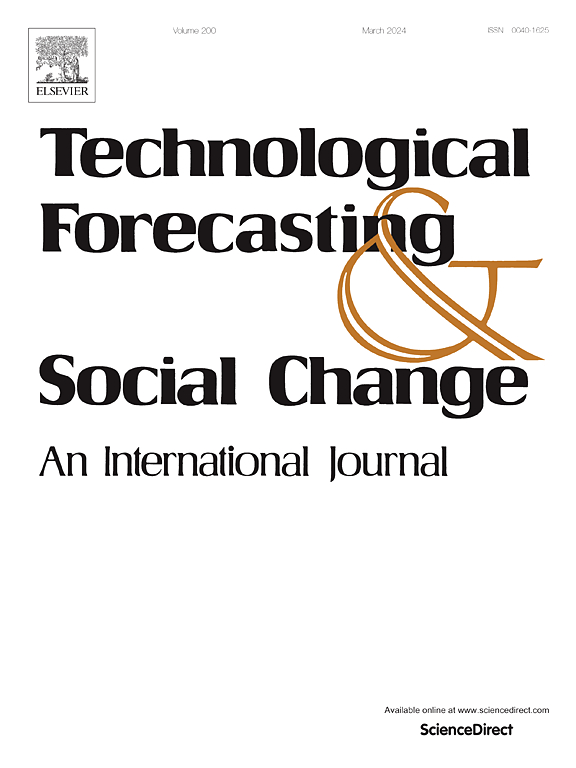Roles of related and unrelated external technologies in shaping regional breakthrough technological advantages
IF 12.9
1区 管理学
Q1 BUSINESS
Technological Forecasting and Social Change
Pub Date : 2024-11-18
DOI:10.1016/j.techfore.2024.123871
引用次数: 0
Abstract
Technological innovation serves as an intrinsic driver for regional economic development, particularly wherein breakthrough innovations exert a profound impact on the continuous evolution of regional technologies and industrial upgrading. Given the uneven distribution of innovation resources and technological capabilities across regions, regions should not only focus on indigenous innovation but also consider how to leverage knowledge from outside the region. This approach is crucial for breaking the path dependency of innovation to achieve regional technological breakthrough. Our paper broadens the technological relatedness framework from a local scope to an inter-regional context by introducing the concept of external technological densities. Specifically, we investigate the nuanced roles of external technologies distinguished by relatedness and unrelatedness, in shaping the trajectories of regional breakthrough technological innovation. Our research underscores the crucial role of assimilating knowledge spillovers from related external technologies for catching-up regions, as such integration fosters breakthrough innovations, while the inclusion of unrelated external technologies exhibits adverse effects. Moreover, both external identical technology and external related technology complement local related technology, jointly facilitating breakthroughs in relative technological advantages. However, in high-complexity cities and technological domains, it is more critical to leverage local related and unrelated technologies rather than relying on external knowledge spillovers.
相关和不相关的外部技术在形成地区突破性技术优势方面的作用
技术创新是区域经济发展的内在驱动力,尤其是突破性创新对区域技术的持续演进和产业升级产生深远影响。鉴于各地区创新资源和技术能力分布不均,各地区不应只关注本土创新,还应考虑如何利用地区外的知识。这种方法对于打破创新的路径依赖,实现区域技术突破至关重要。我们的论文通过引入外部技术密度的概念,将技术关联性框架从本地范围扩展到区域间范围。具体而言,我们研究了外部技术在塑造区域突破性技术创新轨迹中的微妙作用,这些外部技术有相关性和非相关性之分。我们的研究强调,对于追赶型地区来说,吸收相关外部技术的知识溢出效应至关重要,因为这种整合会促进突破性创新,而吸收非相关外部技术则会产生不利影响。此外,外部相同技术和外部相关技术都是对本地相关技术的补充,共同促进了相对技术优势的突破。然而,在高复杂性城市和技术领域,利用本地相关技术和非相关技术比依赖外部知识溢出更为重要。
本文章由计算机程序翻译,如有差异,请以英文原文为准。
求助全文
约1分钟内获得全文
求助全文
来源期刊
CiteScore
21.30
自引率
10.80%
发文量
813
期刊介绍:
Technological Forecasting and Social Change is a prominent platform for individuals engaged in the methodology and application of technological forecasting and future studies as planning tools, exploring the interconnectedness of social, environmental, and technological factors.
In addition to serving as a key forum for these discussions, we offer numerous benefits for authors, including complimentary PDFs, a generous copyright policy, exclusive discounts on Elsevier publications, and more.

 求助内容:
求助内容: 应助结果提醒方式:
应助结果提醒方式:


